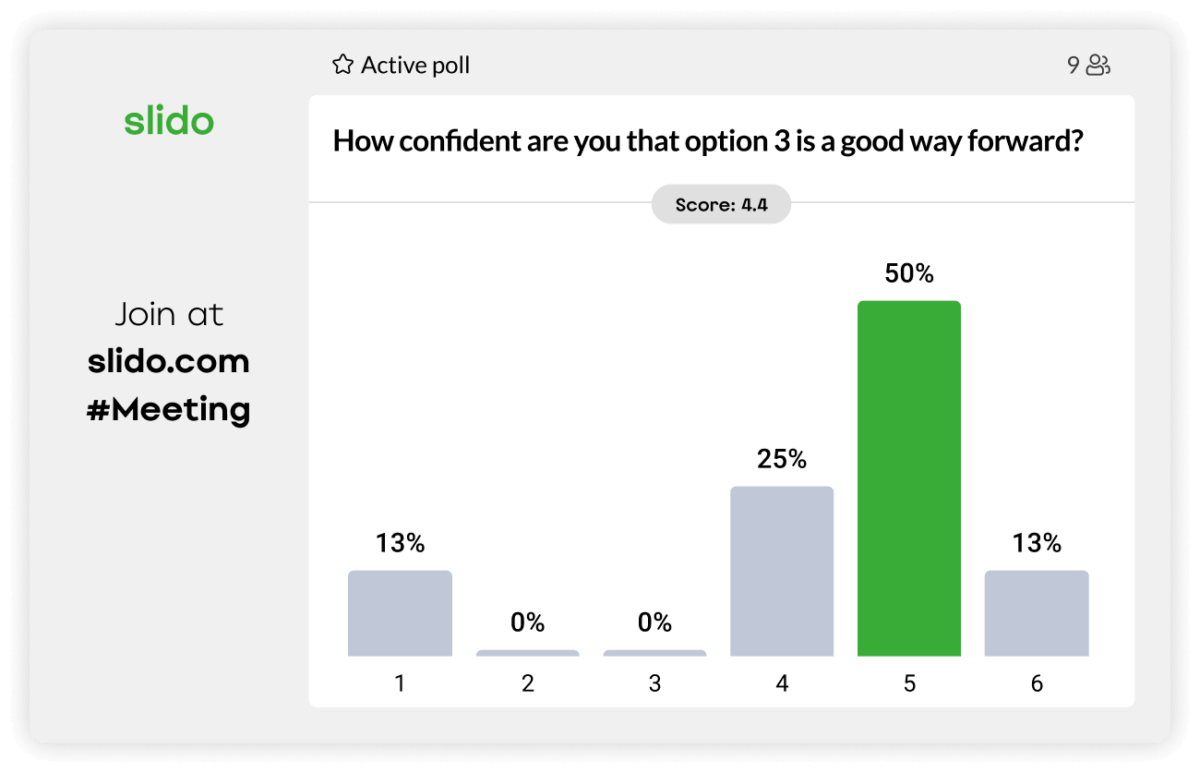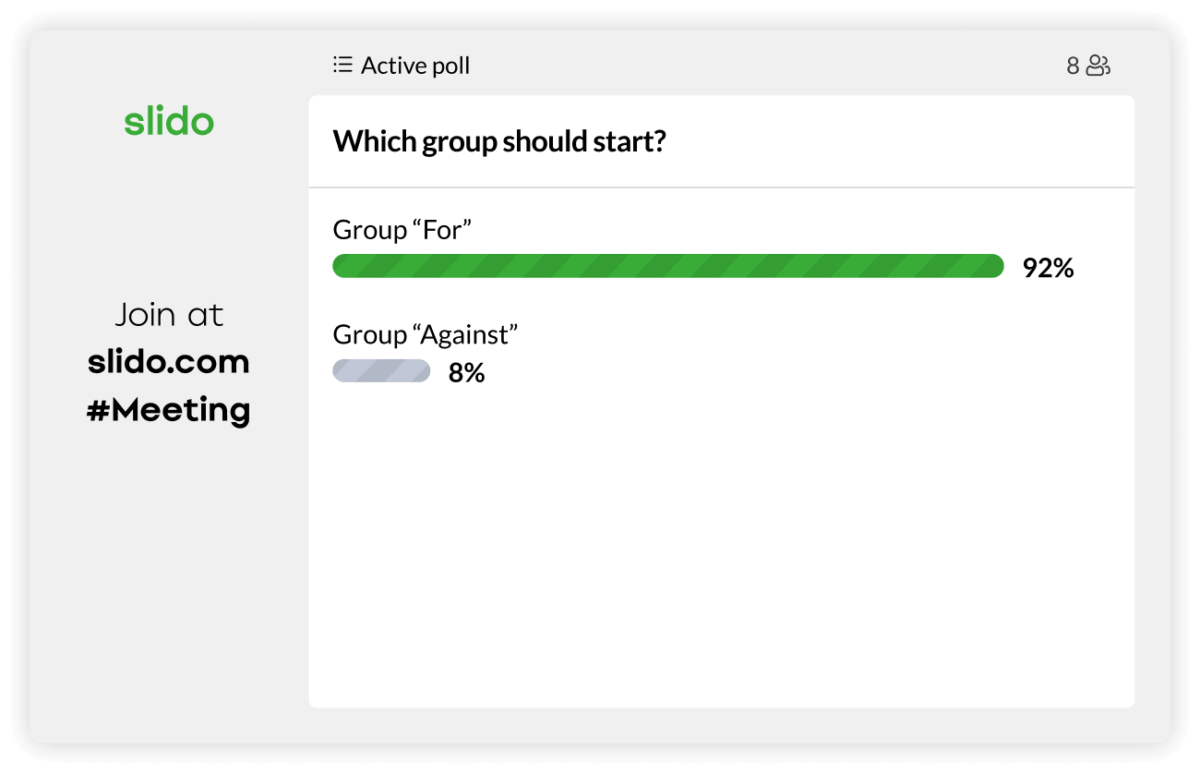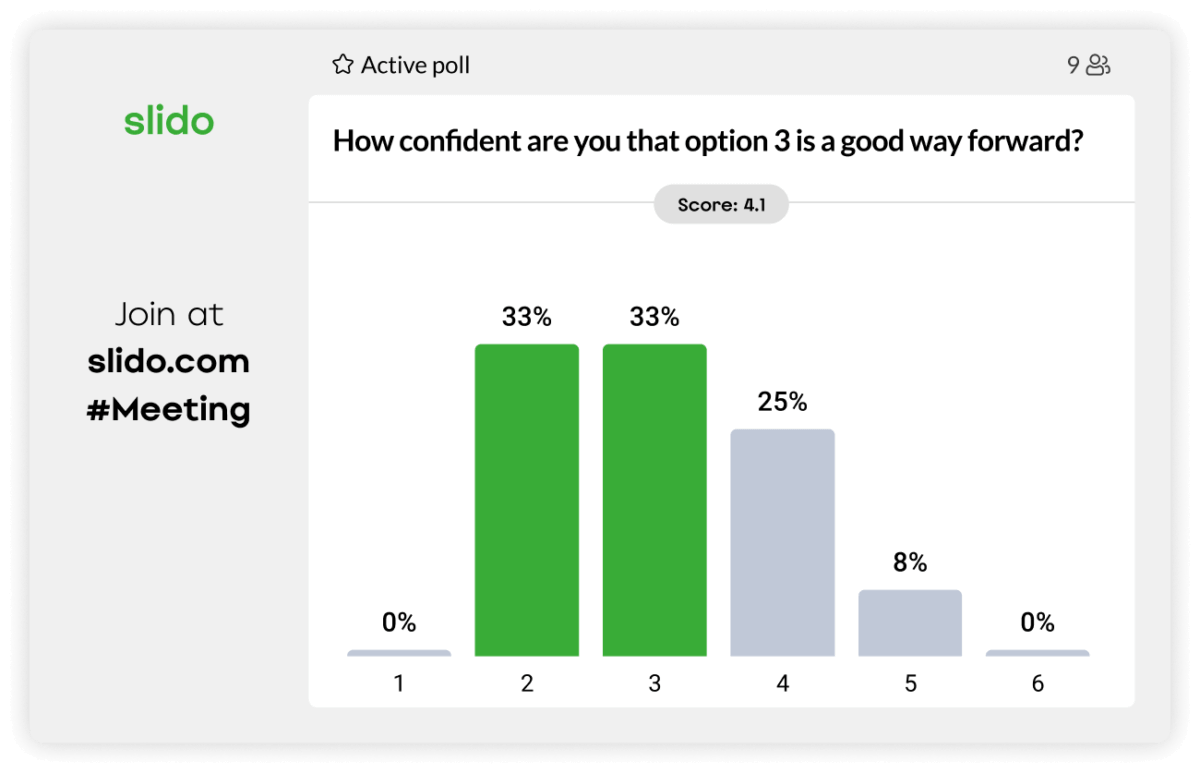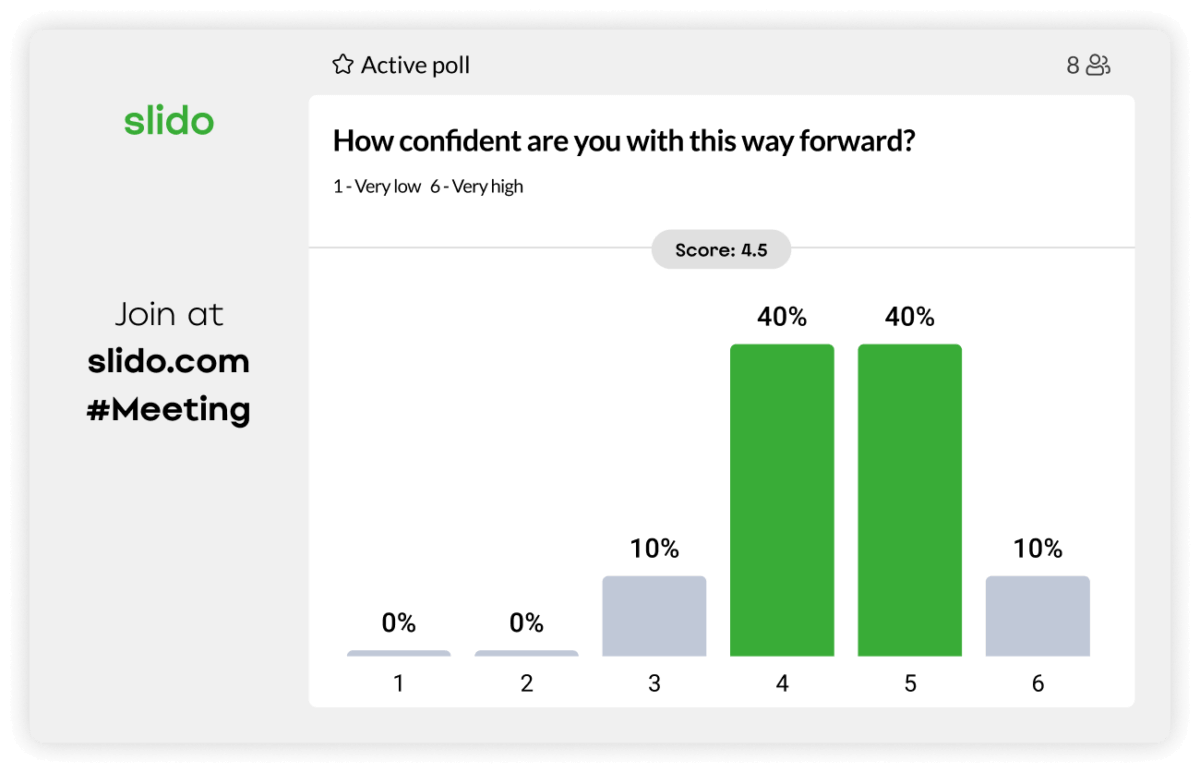Choosing the right business strategy as a leadership team can be challenging. The decision-making process for such a critical part of the business can often be complicated, long-winded and hard to make democratically.
Our leadership team at Slido have rituals in place to ensure we’re monitoring, adjusting and adapting as needed. One of these rituals is that we meet for a multi-day leadership offsite every quarter.
As we are a distributed team of 11 spread across five different cities, we try to meet together in person when we can. However, this isn’t always feasible so we tend to opt for a hybrid meeting setup.
At our recent leadership offsite, we had a big decision ahead of us about our business strategy. We had been exploring a change for a while and it was critical that we now made a decision.
To ensure that we didn’t leave any stone unturned with this decision, we carefully structured our conversation using intentional interaction points.
- Building context for our decision
- For and against: weighing options
- Enabling holistic decision-making
- Arriving at a decision
- Moving forward with our decision
- Use this decision-making process
Building context for our decision
We started with our General Manager Peter Komornik sharing relevant business context and data for our leadership team to consider. He closed by sharing three proposals for how our business strategy could evolve. Our goal for the meeting was to decide which of the three routes to take.
Option three would require the biggest transformation and pivot for us. As a result, Peter designed the meeting to focus mostly on this option. Since this would be the most radical path with serious implications for the whole business, it made sense for it to be a shared decision-making process.
To start the process, Peter ran a confidence vote to understand our current position.

As you can see, there was some dissent but we were optimistic that it could be the route forward.
For and against: weighing options
To make an informed decision, we split in two to explore option three further. Each group was to wear a different ‘hat’, with one side putting forward the argument to go with this option and the other against it.
As a team, we’re deeply inspired by Patrick Lencioni’s ‘Five Dysfunctions of a Team’, where he says:
“Teams that trust each other are not afraid to engage in passionate dialogue around issues and decisions that are key to the organization’s success. They do not hesitate to disagree with, challenge, and question one another, all in the spirit of finding the best answers, discovering the truth, and making great decisions.”
It’s important to us that we engage in conflict in a way which feels comfortable with our company culture and values. This exercise enables that as well as seeing the full picture to remove any bias from important decisions.
To keep it balanced, you have to argue for the opposing side to what you believe, e.g. the person voting one would argue for the proposal.
We had 90 minutes to summarize three key arguments for our position. To do this successfully, it’s critical to discuss both sides of the argument to put the best case forward.
Each group had a facilitator to ensure that everyone in the group had the chance to contribute and share their perspective.
Enabling holistic decision-making
After 90 minutes, we came back together. To decide who went first, we ran a multiple choice poll. In these meetings, we always hide the poll results while the votes are coming in to prevent influencing the vote and keep the results democratic.

Each side had seven minutes to present their key arguments plus seven minutes for questions. Both groups opted to have one speaker present with the key arguments summarized on a slide.
Arriving at a decision
With all the arguments put forward, it was time to make a decision. To establish a benchmark, we ran exactly the same poll. The poll gave us something consistent to look at and feel the impact of our discussions.
On this occasion, the poll results were surprising. And of course, because the results had been hidden, nobody had influenced anyone during the vote.

Through discussion, we were able to acknowledge some hard truths about the approach without ego or bias. We were able to see that this wouldn’t be the right business strategy at this time.
To ensure that everyone’s voice was heard, we asked the 4s and 5s to share their thoughts behind their votes. We then asked the same of those who voted 2 or 3. Again, this helped us to build the full picture and understanding as a group.
Moving forward with our decision
After a break (such intense discussions can be tiring!) we ran a poll putting all three options on the table to make the decision about how we’d proceed.

We like to practice the ‘Disagree and Commit’ concept. This is a principle where you ensure that everyone has space to express their opinion but once a decision has been made, everyone gets behind it wholeheartedly.
We asked the person who chose option one to share their opinion and then proceeded to plan for option two. While the outcome wasn’t as originally anticipated, Peter summarized a proposal based on all the inputs from our discussions.
He also included a list of what was important for us to consider and the questions that we would need to answer during the next day of our offsite.
To wrap up the day, we ran one final poll to understand the confidence of the team with that proposal.

While we had firmly decided on the path we wanted to take, there were still finer details to work out in order to increase confidence before we would be ready to present it to the rest of the company in six weeks time.
Use this decision-making process
Do you need to make an important decision? By following a flow similar to us, you can take a lot of the heavy lifting out of decisions tied to your business strategy.
Here’s the simple steps for you to replicate this ethical decision making process:
- Gather all the necessary context
- Use a rating poll to benchmark current opinion on the topic
- Discuss why people rated how they did
- Split into two groups: one for and one against. Put people into the group where they have the opposing view
- Prepare your arguments for each side
- Present your arguments to the other group
- Run the benchmarking poll again to see how opinion has changed
Let us know over in our community if you try it, we’d love to be inspired by you for how we can tweak it in the future!



